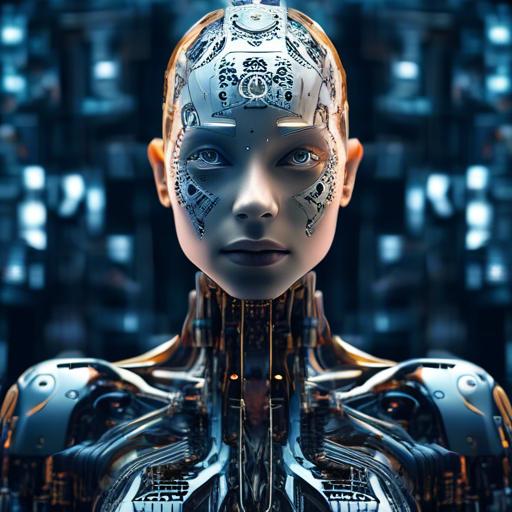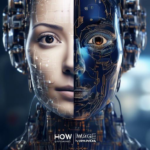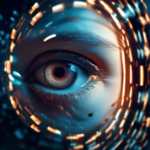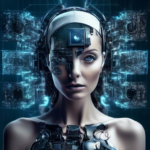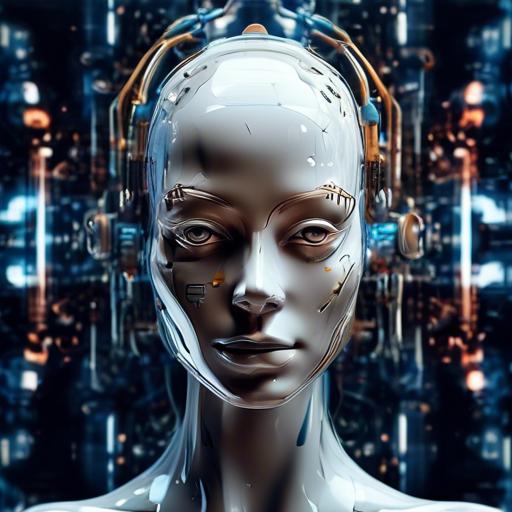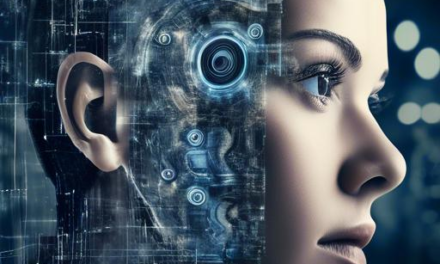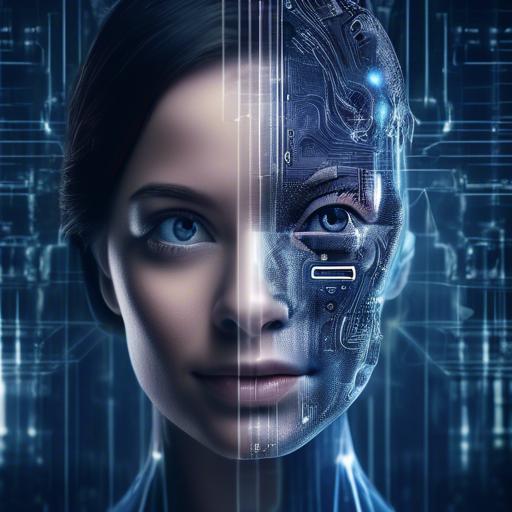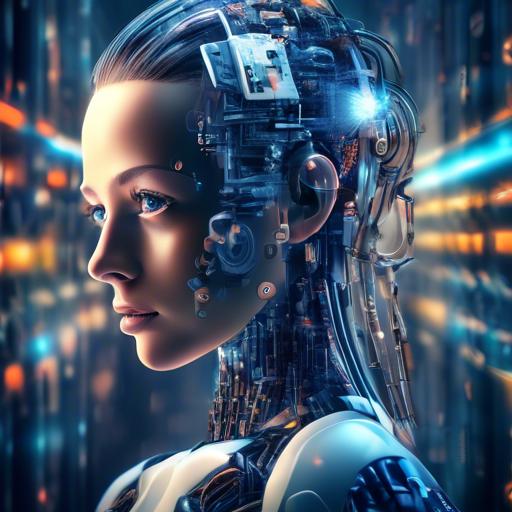In an era where pixels, filters, and frames shape our visual storytelling, image editing stands as an art form that translates vision into reality. Traditional techniques, honed through decades of meticulous artistry, have long been the stalwarts behind our most cherished, iconic images. Yet, as we plunge deeper into the digital age, Artificial Intelligence has emerged as the avant-garde force, reshaping the image editing landscape with startling innovation and efficiency.
This article embarks on a journey through the contrasting realms of traditional and AI-based image editing. From the painstaking precision of manual edits to the rapid, intelligent adjustments born from machine learning, we will explore how these divergent methods each bring their own unique magic to the canvas. Whether you’re a seasoned professional or an aspiring enthusiast, let us support you in uncovering the nuances of these powerful tools that define our visual world today.
Table of Contents
- Understanding the Essence of Traditional Image Editing
- Delving into the World of AI-Enhanced Image Manipulation
- Speed and Efficiency: Manual Efforts vs. Automated Precision
- Creative Control in Classic Techniques Versus AI Trends
- Learning Curves: Mastering Traditional Skills and AI Tools
- Cost-Effectiveness: Analyzing Financial Aspects of Both Methods
- Balancing Artistry with Technology: A Pragmatic Approach
- Concluding Remarks
Understanding the Essence of Traditional Image Editing
Traditional image editing is an art form that has evolved alongside photography. **Mastering this craft requires a deep understanding of several core principles and techniques**:
- Layer-Based Adjustments: Professionals often manipulate images by using layers. Each layer can contain different elements or adjustments, allowing for precise control. This technique helps in non-destructive editing, ensuring the original image remains intact.
- Manual Retouching: Tools like the clone stamp, healing brush, and dodge & burn are staples in traditional editing software. These tools allow for meticulous, pixel-by-pixel enhancements, essential for tasks like removing blemishes or fine-tuning details.
- Color Correction: Adjusting the hue, saturation, and lightness of an image is a foundational skill. Traditional editors have a keen eye for achieving the perfect balance of colors to ensure the final output is aesthetically pleasing and true to life.
| Technique | Description |
|---|---|
| Curves and Levels | Advanced methods for adjusting brightness and contrast, providing greater control over tonal ranges. |
| Masking | Creating precise areas of an image to isolate and edit without affecting the entire picture. |
| Filters and Effects | Using predefined styles to add creative effects or enhance image quality. |
Moreover, it’s important to recognize the role of **human intuition and creativity** in traditional image editing. Editors rely on their experience and artistic vision to make choices that machines cannot easily replicate. Whether it’s adjusting the composition, selectively sharpening edges, or adding emotional depth through color grading, the human touch remains irreplaceable.
Traditional image editing also benefits from a **rich history of established practices**. This heritage includes fundamental guidelines and aesthetic principles derived from conventional photography and fine arts, offering a time-tested framework for producing consistently high-quality results.
In essence, traditional editing is not just about the tools or techniques but embodies a commitment to **craftsmanship and attention to detail**. It’s the meticulous process that transforms a simple photograph into a compelling visual masterpiece, celebrating the subtle nuances that only a skilled human editor can achieve.
Delving into the World of AI-Enhanced Image Manipulation
Traditional image editing techniques, which have ruled the domain for decades, rely heavily on manual intervention. They often involve tools like brushes, lasso tools, and color correction filters. These necessitate a certain level of expertise and a keen eye for detail to achieve the desired effect. **Photoshop**, **GIMP**, and **Lightroom** are among the software tools that have become staples in the toolkit of every photo editor. The tradeoff here is time and skill; manual efforts demand patience and practice to hone proficiency.
On the other hand, AI-enhanced image manipulation opens up a new realm of possibilities by integrating deep learning and neural networks. This advancement allows for automation in processes that were previously labor-intensive. For instance, AI can detect and edit intricate patterns, manage lighting adjustments, and even undertake colorization of black-and-white images with astounding accuracy.
Here are some areas where AI outshines traditional methods:
- Speed: AI algorithms can process thousands of images in the time a human would take to process a few dozen.
- Precision: Neural networks imbue AI tools with the ability to execute fine adjustments that can be difficult and time-consuming for humans.
- Ease of Use: User-friendly interfaces make AI tools accessible to people with little to no editing experience.
| Aspect | Traditional Editing | AI-Based Editing |
|---|---|---|
| Time Required | High | Low |
| Skill Level | Expert | Beginner Friendly |
| Consistency | Varied | High |
Despite these advantages, it’s important to acknowledge the artistic control that traditional techniques offer. Experienced editors can infuse their unique style and creative touch into every pixel. However, AI-enhanced tools provide a compelling blend of efficiency and accessibility, democratizing high-quality image manipulation.
Speed and Efficiency: Manual Efforts vs. Automated Precision
Traditional image editing tasks, performed manually, often require extensive time and meticulous attention to detail. Human skill, while incredibly valuable, can sometimes be inconsistent and is influenced by factors such as fatigue or cognitive biases. A professional photographer may spend hours on a single image, adjusting lighting, color balance, and removing imperfections.
**Automated image editing**, powered by artificial intelligence, revolutionizes this process through unparalleled speed and precision. AI algorithms, trained on vast datasets, can detect and rectify issues in real-time, ensuring consistency across a batch of images. A task that might take hours manually can be effortlessly accomplished in minutes or even seconds.
| Attribute | Manual Efforts | AI-Based Editing |
|---|---|---|
| Time Consumption | High | Low |
| Consistency | Variable | Uniform |
| Skill Dependency | High | Minimal |
Manual editing strives for customization and artistic nuance, often employing a blend of techniques and personal style. However, it isn’t without its drawbacks. The repetitive nature of certain tasks can lead to errors, and the subjective nature of editing often introduces variability in the output.
On the other hand, AI-based editing brings in features like **bulk image processing**, efficiently managing high volumes of work with superior accuracy. Neural networks and deep learning ensure that even the smallest of details are accounted for, adjusting them to adhere to predefined standards.
- **Batch Editing**: AI can process hundreds of images simultaneously, ensuring uniformity and saving considerable time.
- **Detail Enhancement**: Algorithms can detect and enhance subtle details that might be missed during manual editing.
- **Error Reduction**: Minimizes human errors and provides a consistent end product.
While manual efforts harness human creativity and experience, AI-based solutions provide a solid foundation for boosting productivity and ensuring high-quality results. The synergy of both may just be the future of image editing, where tradition meets technology, enhancing both speed and efficiency.
Creative Control in Classic Techniques Versus AI Trends
The world of image editing has been revolutionized with AI trends, yet the essence of **creative control** remains profoundly different when comparing it to classic techniques. Traditional methods rely heavily on the artist’s skill, intuition, and meticulous attention to detail. The hands-on nature of these techniques allows for an intimate connection with the work, nurturing a deeper sense of accomplishment and personal touch.
Conversely, AI-based tools provide automation and efficiency, transforming complex processes into something more accessible. While this can dramatically enhance productivity and consistency, it may sometimes eclipse the human touch that infuses personality into each piece:
- **Traditional Techniques**: Require expertise, patience, and manual adjustments.
- **AI Trends**: Offer quick results through smart algorithms, reducing the time and effort involved.
When discussing manipulation and enhancement, there’s a distinct divergence in **creative freedom**. Classic methods, with tools like brushes and layers, afford granular control over every pixel. This painstaking process, though time-consuming, allows for boundless artistic expression.
Meanwhile, AI tools such as automated filters and style transfers streamline this process by making assumptions based on recognized patterns and data. While highly effective for standard tasks, they can sometimes restrict the artist’s vision to predefined presets and outcomes.
| Aspect | Classic Techniques | AI-Based Techniques |
|---|---|---|
| Control | Hands-on, detailed editing | Automated precision |
| Time | Often lengthy | Quick and efficient |
| Creative Flexibility | Unlimited, dependent on skill | Preset-based, easier for beginners |
Learning Curves: Mastering Traditional Skills and AI Tools
Traditional image editing often requires mastering a range of skills that span from understanding color theory to hand-illustration techniques. Artists and photographers spend years honing their craft, learning to manipulate light, shadow, and texture to create compelling visuals. The mastery lies in the detailed attention to each element, combining an artist’s vision with technical skill.
- Manual Adjustments: Essential edits like brightness, contrast, and hue are often manually calibrated.
- Advanced Techniques: Tools like the clone stamp, dodge, and burn require precision and a steady hand.
- Creative Layering: Layer masks, blending modes, and opacity settings play a critical role in complex compositions.
Traditional tools offer a vast array of creative freedom but equally demand a significant time investment. It’s a journey of continuous learning, where each project refines one’s skills further.
In contrast, AI-based image editing tools are designed to simplify and expedite this process. While they certainly make editing more accessible, allowing for quick fixes and enhancements, they also democratize skills that traditionally took years to acquire. With the advent of neural filters and automated enhancements, even beginners can produce professional-grade images.
| Aspect | Traditional Editing | AI-Based Editing |
|---|---|---|
| Learning Curve | Steep | Moderate |
| Time Investment | High | Low |
| Creative Control | High | Variable |
However, AI tools are not without their challenges. One needs to understand the underlying algorithms to make effective use of automated suggestions and corrections. Moreover, while AI can offer a range of functionalities, it might not always capture the nuance and subtleties of human touch. The key lies in finding a balance, leveraging AI to handle repetitive tasks while reserving manual techniques for areas where a personal stamp is essential.
The fusion of traditional skills and modern AI tools can create a powerful toolkit for any image editor. Understanding the strengths and limitations of both approaches allows for a more flexible, efficient, and creative workflow, ultimately resulting in stunning visual outcomes.
Cost-Effectiveness: Analyzing Financial Aspects of Both Methods
When comparing traditional and AI-based image editing techniques, financial considerations play a crucial role. Let’s break down the cost-effectiveness of each method:
- Traditional Image Editing: This involves manual work by skilled editors using software like Photoshop or GIMP. The expenses include the cost of the software, often purchased as a subscription, and labor costs associated with hiring professional editors.
- AI-Based Image Editing: Leveraging AI tools and platforms like Adobe Sensei or DeepArt.io can automate many repetitive tasks. Costs here include subscriptions to AI services and a potential initial investment in training the software for specific needs.
| Aspect | Traditional | AI-Based |
|---|---|---|
| Initial Investment | Moderate | High |
| Recurring Costs | High | Low to Moderate |
| Efficiency | Varies by expertise | Consistently high |
Over time, the recurring costs of traditional editing techniques can outweigh the higher initial investment required for AI-based tools, making AI a cost-effective choice in the long run. Traditional techniques require continuous hiring and training of skilled personnel, which becomes a significant expense, especially for businesses with large-scale image editing needs.
AI-based techniques also offer potential savings by reducing the turnaround time for image editing tasks. For businesses, this translates into freeing up human resources for more strategic activities and reducing the operational timeline, which can lead to faster project completions and quicker time-to-market for visual campaigns.
while both methods have their distinct financial impacts, AI-based image editing techniques often emerge as the more cost-effective solution over time, especially for organizations looking to scale their visual content production efficiently.
Balancing Artistry with Technology: A Pragmatic Approach
An artist’s palate has been dramatically extended with the advent of AI technologies, but the essential tension between human creativity and machine efficiency remains. Traditional image editing techniques are often viewed as a labor of love, requiring painstaking effort and meticulous attention to detail.
- **Manual Touch-Ups**: Artists use brushes, pencils, and other tools to add intricate details.
- **Layer-Based Editing**: Professionals often work with multiple layers to construct a single image.
- **Analog to Digital**: Frequently, traditional artists will scan their work to add digital refinements.
On the other hand, AI-based image editing offers a more streamlined approach, emphasizing speed and automation. By leveraging algorithms and machine learning, AI-driven tools can automatically enhance images, make corrections, and even create artwork from scratch.
| Aspect | Traditional Editing | AI-Based Editing |
|---|---|---|
| Time | Hours to Days | Seconds to Minutes |
| Tools | Brushes, Pens, Layers | Algorithms, Neural Networks |
| User Skill Level | High | Low to Medium |
| Consistency | Variable | High |
One is not necessarily better than the other; it’s about striking a balance. Traditional techniques offer unique, human touches that imbue each piece with soul and character. AI techniques, however, democratize the ability to create stunning visuals, ensuring high-quality results with less effort.
Ultimately, the future belongs to those who can embrace both paradigms. Imagine a hybrid world where artists start with a pencil sketch, refine it with photo editing software, and then let AI add the final polish. The potential for innovation is boundless.
Concluding Remarks
As we explore the vast and exciting world of image editing, it becomes clear that both traditional techniques and AI-based tools have their own unique strengths and capabilities. By understanding the differences between them, we can better appreciate the artistry and innovation that each approach brings to the table. Whether you prefer the hands-on, tactile experience of traditional editing or the fast and precise results of AI, there is no right or wrong choice. The key is to experiment, learn, and discover what works best for you. Embrace the diversity of image editing techniques and let your creativity soar! Remember, the beauty of art lies in its endless possibilities. So go ahead, unleash your imagination and create something truly remarkable. Happy editing!

